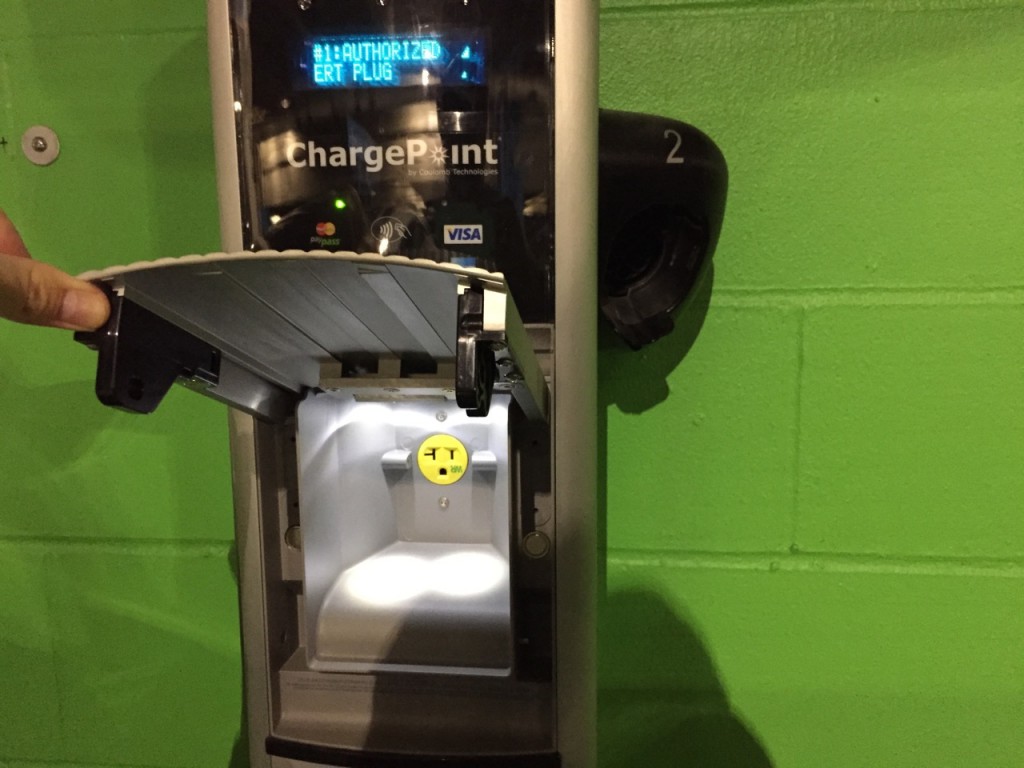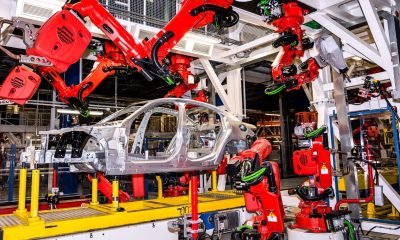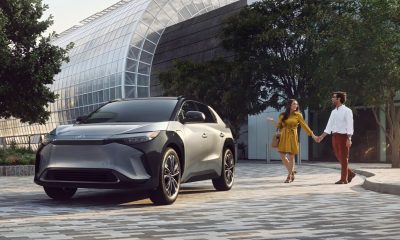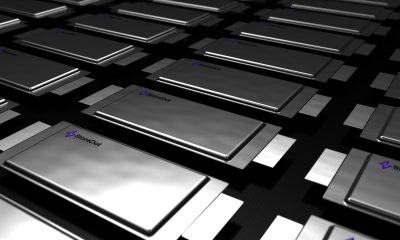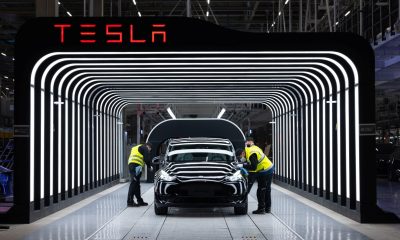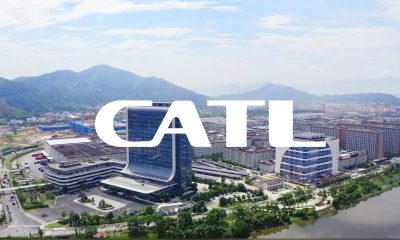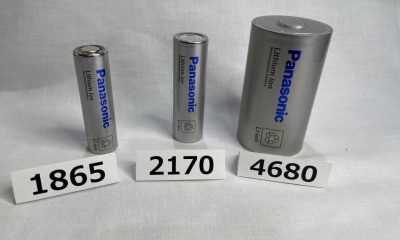Lifestyle
S in the City: Model S Owner Experience in the Big City
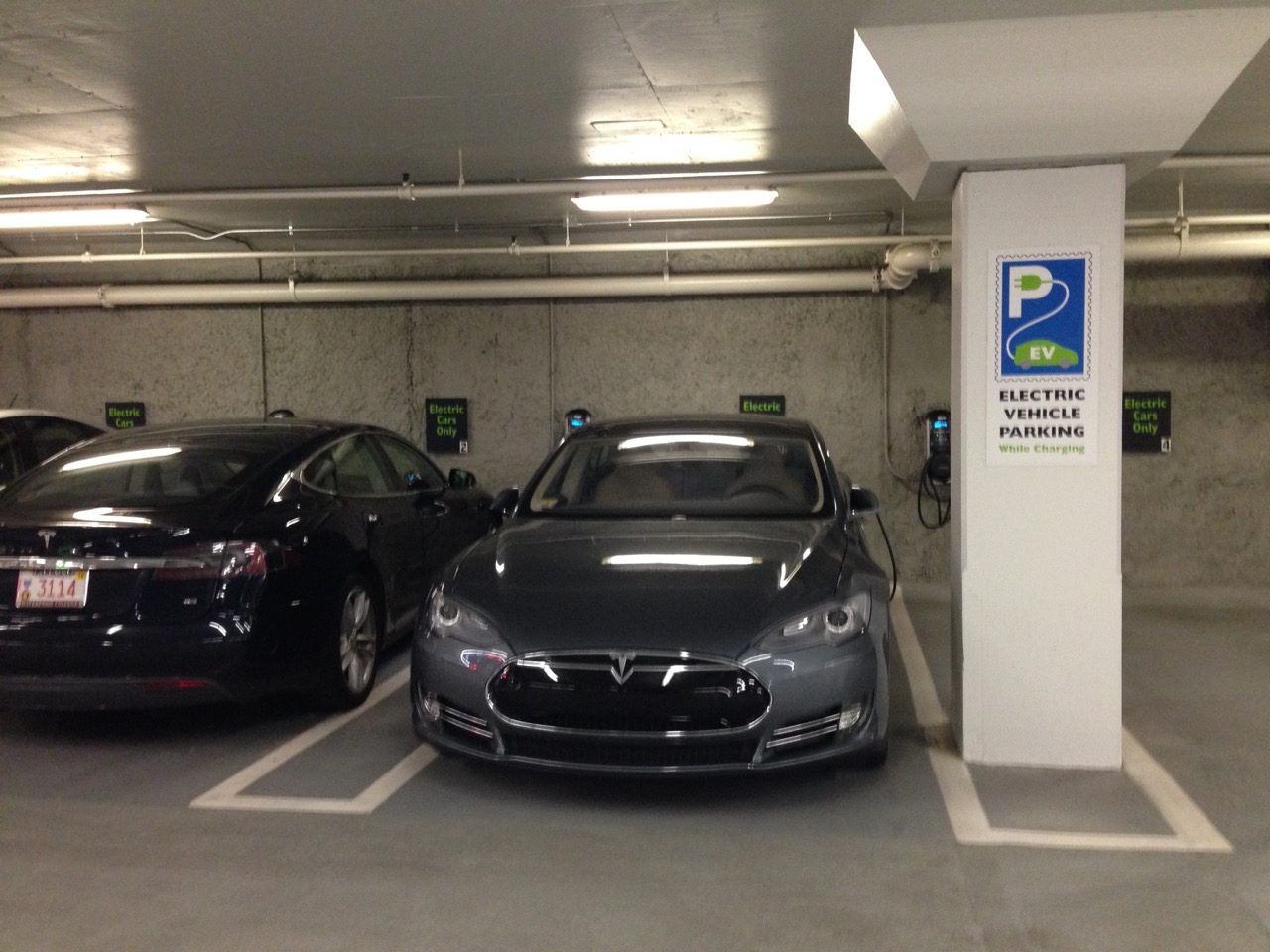
Whether you live or work in the city, or drive in for entertainment, there are notable nuances with driving a Tesla Model S into a busy metropolitan area. Finding parking, navigating tight streets, locating public charging stations and learning etiquettes with charging overnight are areas that I’m quickly adjusting to.
Driving into the City
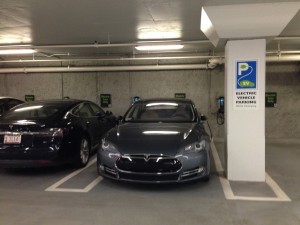 I drive my Model S as much as humanly possible and under most circumstances. Whether it’s taking long road trips or navigating through narrow city streets, there hasn’t been many situation which I’ve shied away from. Driving into the city (Boston) for dinner was no different.
I drive my Model S as much as humanly possible and under most circumstances. Whether it’s taking long road trips or navigating through narrow city streets, there hasn’t been many situation which I’ve shied away from. Driving into the city (Boston) for dinner was no different.
Since I didn’t know the city streets very well, I posted to the local New England forum on TMC and asked for help. TMC is a great resource for Tesla owners that are looking for advice from other Tesla owners. My quest to find a “Tesla owner approved” local parking spot directed me to a garage not too far from the restaurant – Boston’s Post Office Square.
Parking was tight, as expected, but I managed to find comfort knowing that I parked next to another Model S owner. I plugged the car into a ChargePoint unit, went off to my long dinner and came back to an extra 60 miles of range. Best of all this was all free since Massachusetts law prohibits re-sale of electricity.
I didn’t need the extra 60 miles of extra range to get home, but because there were several open EV spots available, I didn’t feel as bad using one for a longer duration of time. It’s important to note that this wouldn’t be the case during the day when charging stalls are a more sought after commodity. Keep this in mind and don’t occupy an EV charging stall when there’s only one available and you’re not in need of a charge.
Overnight in the City
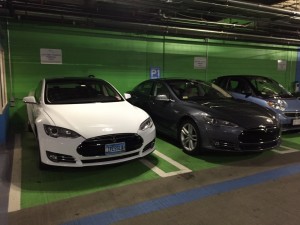 My second experience with the Model S in the city came by way of a conference held at the Boston Seaport Hotel. The conference required me to stay overnight so I did my own research via Plugshare and found a charging location with five J1772 chargers. It turned out there were only three Chargepoint systems installed for the five EV parking spots. Parking was extremely tight but I was able to take my time, as there was no other cars around, and get the Model S placed perfectly into the parking spot.
My second experience with the Model S in the city came by way of a conference held at the Boston Seaport Hotel. The conference required me to stay overnight so I did my own research via Plugshare and found a charging location with five J1772 chargers. It turned out there were only three Chargepoint systems installed for the five EV parking spots. Parking was extremely tight but I was able to take my time, as there was no other cars around, and get the Model S placed perfectly into the parking spot.
I couldn’t help but wonder why there were three ChargePoint systems but five EV specific parking spaces. The ChargePoint system claimed to have two chargers on each post. There was clearly a J1772 plug on each of the systems but they were all in use.
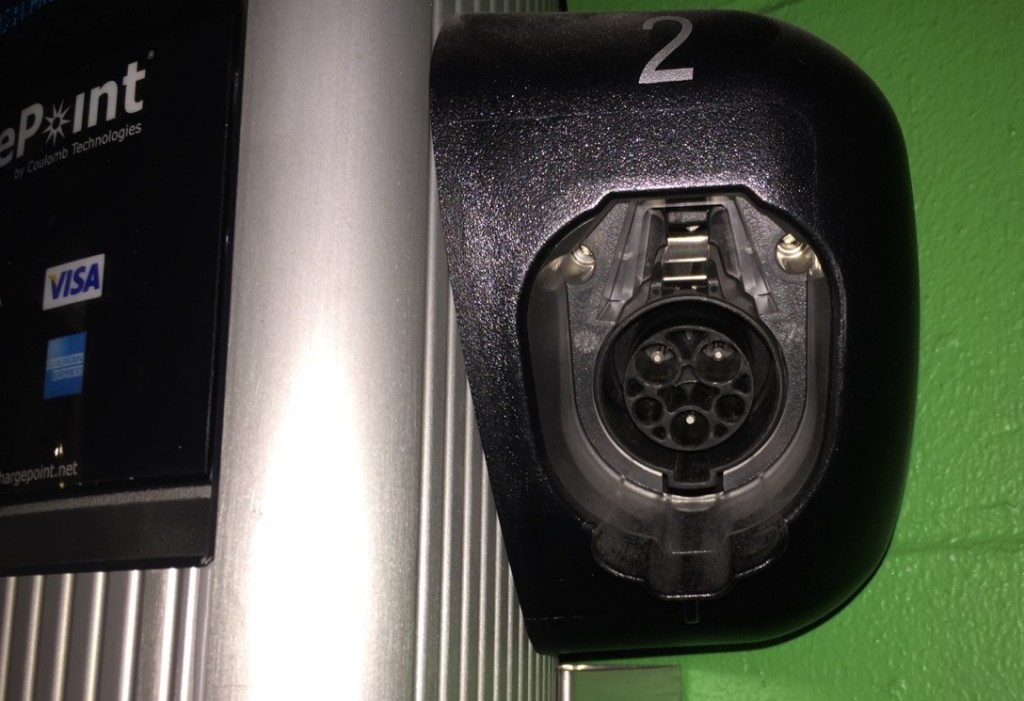
Upon further inspection I could see a label for “Charger #2” but unfortunately I had no adapter that would work for it. I later realized that this was just the receiving end for the J1772 plug and meant to be a holder for the plug. I poked around a bit more and swiped my ChargePoint card on the scanner for “Charger #1”. A secret door popped open and provided a standard NEMA 5-15 outlet (standard US wall charger).
Fortunately I came prepared with an extra UMC. I didn’t have much of a choice with my charging options so I decided to plug into the very slow charging NEMA 5-15 and leave it overnight. I’m not quite sure why ChargePoint decided to name the higher power charging solution “Charger #2”, or why the NEMA 5-15 is hidden, but having a sticker or signage explaining these details could go a long way.
Lessons Learned
Driving into the city with a Model S comes with a few lessons learned as follows:
- ChargePoint seems to be the prevailing charging network provider (at least for much of Boston).
- Charging can be free depending on local laws governing re-sale of electricity.
- EV parking spaces are generally placed at very premium locations and reside on the floor your entering the parking garage from.
- City parking spots are tight to begin with so the additional size and width of the Model S makes it even more difficult to maneuver. Be careful when parking!
- City parking structures are usually underground so cell phone service is generally inaccessible. Don’t rely on keyless entry when parking in the city.
Do you have your own strategy when taking the Model S into the city? I’d love to hear it in the comments below.
Lifestyle
Tesla Model S Plaid battles China’s 1500 hp monster Nurburgring monster, with surprising results
There is just something about Tesla’s tuning and refinement that makes raw specs seem not as game-changing.

The Tesla Model S Plaid has been around for some time. Today, it is no longer the world’s quickest four-door electric sedan, nor is it the most powerful. As per a recent video from motoring YouTube channel Carwow, however, it seems like the Model S Plaid is still more than a match for some of its newer and more powerful rivals.
The monster from China
The Xiaomi SU7 Ultra is nothing short of a monster. Just like the Model S Plaid, it features three motors. It also has 1,548 hp and 1,770 Nm of torque. It’s All Wheel Drive and weighs a hefty 2,360 kg. The vehicle, which costs just about the equivalent of £55,000, has been recorded setting an insane 7:04.957 at the Nurburgring, surpassing the previous record held by the Porsche Taycan Turbo GT.
For all intents and purposes, the Model S Plaid looked outgunned in Carwow’s test. The Model S Plaid is no slouch with its three motors that produce 1,020 hp and 1,420 Nm of torque. It’s also a bit lighter at 2,190 kg despite its larger size. However, as the Carwow host pointed out, the Model S Plaid holds a 7:25.231 record in the Nurburgring. Compared to the Xiaomi SU7 Ultra’s record, the Model S Plaid’s lap time is notably slower.
Real-world tests
As could be seen in Carwow’s drag races, however, Tesla’s tech wizardry with the Model S Plaid is still hard to beat. The two vehicles competed in nine races, and the older Model S Plaid actually beat its newer, more powerful counterpart from China several times. At one point in the race, the Xiaomi SU7 Ultra hit its power limit due to its battery’s temperature, but the Model S Plaid was still going strong.
The Model S Plaid was first teased five years ago, in September 2020 during Tesla’s Battery Day. Since then, cars like the Lucid Air Sapphire and the Xiaomi SU7 Ultra have been released, surpassing its specs. But just like the Model Y ended up being the better all-rounder compared to the BYD Sealion 7 and the MG IM6, there is just something about Tesla’s tuning and refinement that makes raw specs seem not as game-changing.
Check out Carwow’s Model S Plaid vs Xiaomi SU7 drag race video below.
Lifestyle
500-mile test proves why Tesla Model Y still humiliates rivals in Europe
On paper, the BYD Sealion 7 and MG IM6 promised standout capabilities against the Model Y.

BYD is seeing a lot of momentum in Europe, so much so that mainstream media has taken every opportunity to argue that the Chinese automaker has beaten Tesla in the region. But while BYD sales this year in Europe are rising and Tesla’s registrations remain challenged, the raw capabilities of vehicles like the Model Y are difficult to deny.
This was highlighted in a 500-mile challenge by What Car? magazine, which showed that the new Tesla Model Y is more efficient, cheaper to run, and more reliable than rivals like the BYD Sealion 7, and even the nearly 400 KW-charging MG IM6.
Range and charging promises
On paper, the BYD Sealion 7 and MG IM6 promised standout capabilities against the Model Y. The Sealion 7 had more estimated range and the IM6 promised significantly faster charging. When faced with real-world conditions, however, it was still the Model Y that proved superior.
During the 500-mile test, the BYD nearly failed to reach a charging stop, arriving with less range than its display projected, as noted in a CarUp report. MG fared better, but its charging speeds never reached its promised nearly-400 kW charging speed. Tesla’s Model Y, by comparison, managed energy calculations precisely and arrived at each stop without issue.
Tesla leads in areas that matter
Charging times from 25% to 80% showed that the MG was the fastest at 17 minutes, while Tesla and BYD were close at 28 and 29 minutes, respectively. Overall efficiency and cost told a different story, however. The Model Y consumed 19.4 kWh per 100 km, compared to 22.2 for MG and 23.9 for BYD. Over the full trip, Tesla’s charging costs totaled just £82 thanks to its supercharger network, far below BYD’s £130 and MG’s £119.
What Car? Magazine’s testers concluded that despite BYD’s rapid sales growth and the MG IM6’s seriously impressive charging speeds, Tesla remains the more compelling real-world choice. The Model Y just offers stability, efficiency, and a proven charging infrastructure through its Supercharging network. And as per the magazine’s hosts, the Model Y is even the cheapest car to own among the three that were tested.
Watch What Car? Magazine’s 500-mile test in the video below.
Lifestyle
Tesla Cybertruck slapped with world’s least intimidating ticket, and it’s pure cringe
One cannot help but cringe and feel second-hand embarrassment at the idea of a person just driving around with a stack of these babies.

A Cybertruck parked at Stanford Shopping Center in California was recently hit with what might be the most try-hard piece of paper ever slipped under a wiper blade: a “fake citation” accusing the driver of supporting a “fascist car.”
The note, shared on X by Tesla staff program manager Ryan Torres, quickly made the rounds on X, where it quickly gained attention as an example of how not to protest.
The world’s least intimidating ticket
According to the citation, the supposed “violation” was “driving a fascist car.” The remedial action? Take the bus, call an Uber, or ride a bike. The note also dubbed Elon Musk a “chainsaw-wielding Nazi billionaire.” Now, protests against Tesla and Elon Musk have become commonplace this year, but one cannot help but cringe and feel second-hand embarrassment at the idea of a person just driving around with a stack of fake anti-Tesla/Musk citations.
Torres pointed out the irony himself in his post on X. Tesla currently employs over 140,000 Americans, and SpaceX has put the U.S. firmly back at the top of space technology. As Torres put it, maybe the person behind the world’s least intimidating ticket should “read a book on innovation before vandalizing” other people’s property.
Peak performative clownery
Not to mention that the fake ticket’s logic collapses under its own weight. EVs like the Cybertruck are literally designed to reduce emissions, not “destroy the economy.” If anything, Tesla has bolstered the United States’ economy by fueling jobs in engineering, manufacturing, and clean energy. It’s not the first time a Tesla has been the target of vandalism or politically charged notes, but this one stands out for sheer cringe value.
Torres summed it up neatly: “Peak clownery.” On that point, at least, the citation earns full marks. In a way, though, perhaps cringe fake tickets are not as bad as the literal firebombs that were being thrown at Tesla stores and cars earlier this year because some critics were gleefully misinformed about Elon Musk.
-
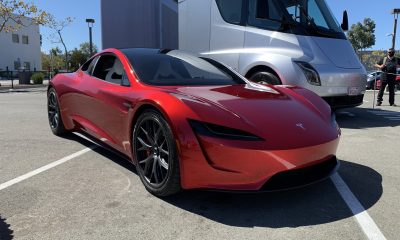
 News2 weeks ago
News2 weeks agoTesla updates fans on its plans for the Roadster
-
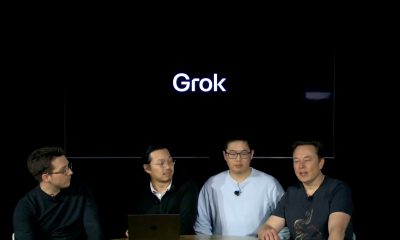
 Elon Musk2 weeks ago
Elon Musk2 weeks agoElon Musk: Grok 5 now has a 10% chance of becoming world’s first AGI
-
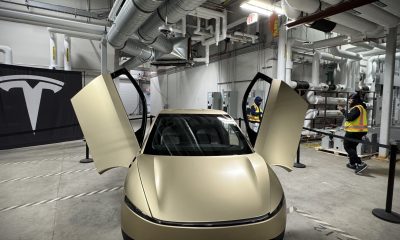
 News2 weeks ago
News2 weeks agoTesla is ramping up its hiring for the Cybercab production team
-
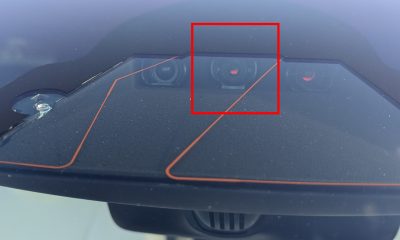
 News2 weeks ago
News2 weeks agoTesla rolled out a new feature with FSD v14 to fix a major complaint
-
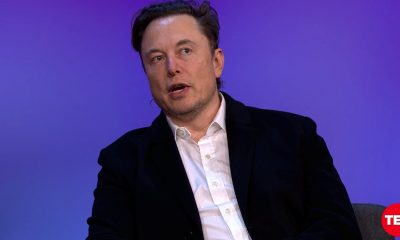
 Elon Musk2 weeks ago
Elon Musk2 weeks agoElon Musk hits back at former Tesla employee who disagrees with pay package
-
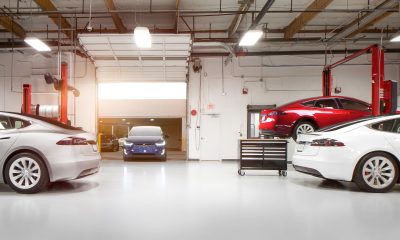
 News2 weeks ago
News2 weeks agoTesla just made Service even easier and more convenient
-
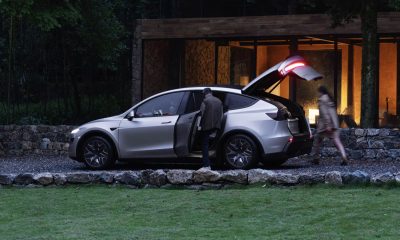
 News2 weeks ago
News2 weeks agoTesla Model Y L becomes China’s 4th best-selling mid-to-large SUV in its first month of sales
-
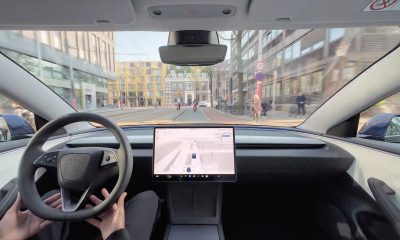
 News2 weeks ago
News2 weeks agoTesla Full Self-Driving’s new version officially gets a wider rollout

